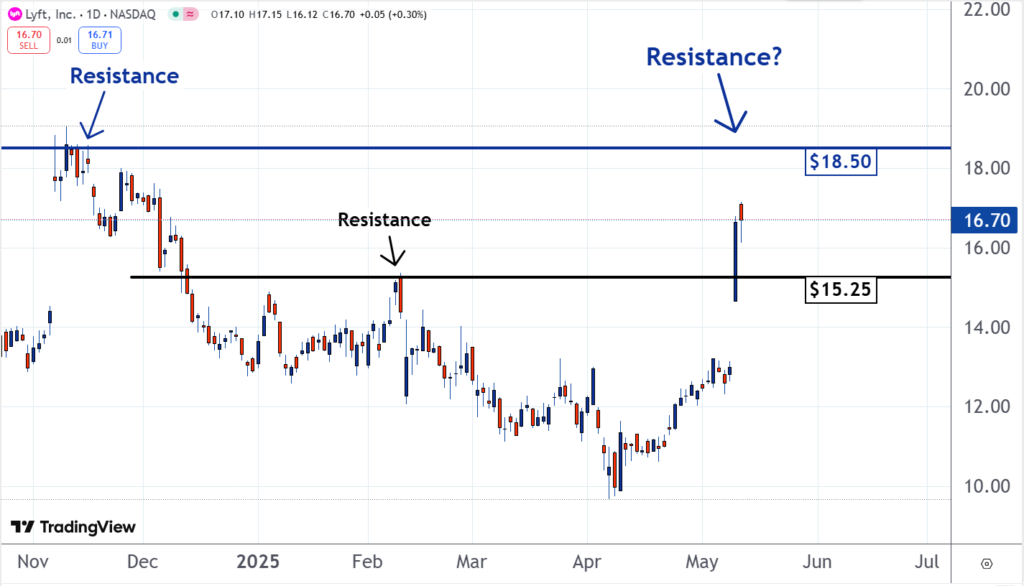
Shares Lyft, Inc. (NASDAQ:LYFT) continue to move higher Monday. The company reported better than expected earnings. CEO David Risher said the quarter was the company's 16th consecutive one of double-digit year over year gross bookings growth.
If the shares reach the $18.50 level, there is a good chance the move higher pauses or ends. There tends to be resistance at prices that had previously been resistance or a peak, and as you can see on the chart below, $18.50 was resistance in November. This is why our technical analysis team has made it our Stock of the Day.

Some traders seem to forget a basic principle of markets. They are driven by supply and demand. If there is more demand, or shares to be bought, than there is supply, or shares to be sold, they move higher. The opposite is true if there is more supply than demand.
When a market that is trending higher gets to a resistance level, there is enough supply to fill all of the demand. This is why rallies end or stall out when they reach resistance.
Sometimes a stock can reverse and move lower after it reaches resistance.
Read Also: Wall Street Rips Higher As Tariff Truce Halts US–China Economic Escalation
This happens when some of the people who created the resistance with their sell orders start to undercut each other. They know the buyers will go to whoever is willing to sell at the lowest price. They don't want to miss out, so they reduce the prices they are willing to sell at.
This could result in a snowball effect that forces the price lower. This is what happened when Lyft hit resistance around $15.25 in November.
Sometimes the buyers eventually overpower the sellers at a resistance level. Investors call this a breakout. A new trend higher may follow. This happened yesterday.
Now the stock is getting close to $18.50. There is a good chance there is resistance around this price because it was resistance in November. Many of the people who bought shares then have held onto their losing positions since.
If the stock returns to $18.50, these remorseful buyers will place sell orders. If there are enough of these orders, resistance will be created again.
At that point, traders will be anticipating a possible reversal or breakout. Once the new trend becomes clear, some traders will jump in to ride the momentum.
Read Next:
- New Inflation Data Hits Tuesday: Why It Could Kill Fed Rate Cut Hopes
Image: Shutterstock



